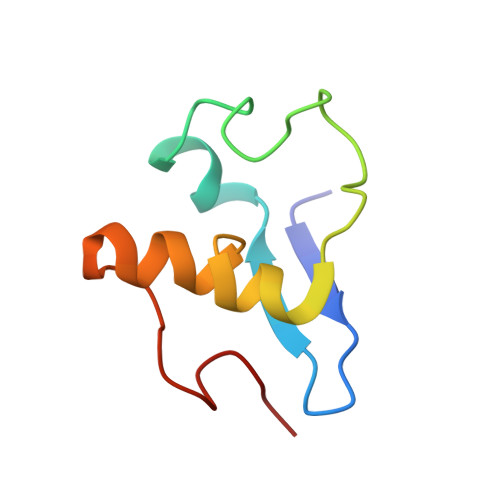Revealing the structural origin of the redox-Bohr effect: the first solution structure of a cytochrome from Geobacter sulfurreducens.
Morgado, L., Paixao, V.B., Schiffer, M., Pokkuluri, P.R., Bruix, M., Salgueiro, C.A.(2012) Biochem J 441: 179-187
- PubMed: 21861844
- DOI: https://doi.org/10.1042/BJ20111103
- Primary Citation of Related Structures:
2LDO - PubMed Abstract:
Gs (Geobacter sulfurreducens) can transfer electrons to the exterior of its cells, a property that makes it a preferential candidate for the development of biotechnological applications. Its genome encodes over 100 cytochromes and, despite their abundance and key functional roles, to date there is no structural information for these proteins in solution. The trihaem cytochrome PpcA might have a crucial role in the conversion of electronic energy into protonmotive force, a fundamental step for ATP synthesis in the presence of extracellular electron acceptors. In the present study, 15N-labelled PpcA was produced and NMR spectroscopy was used to determine its solution structure in the fully reduced state, its backbone dynamics and the pH-dependent conformational changes. The structure obtained is well defined, with an average pairwise rmsd (root mean square deviation) of 0.25 Å (1 Å=0.1 nm) for the backbone atoms and 0.99 Å for all heavy atoms, and constitutes the first solution structure of a Gs cytochrome. The redox-Bohr centre responsible for controlling the electron/proton transfer was identified, as well as the putative interacting regions between PpcA and its redox partners. The solution structure of PpcA will constitute the foundation for studies aimed at mapping out in detail these interacting regions.
- Requimte-CQFB, Department of Chemistry, Faculty of Sciences and Technology, New University of Lisbon, Campus Caparica, 2829-516 Caparica, Portugal.
Organizational Affiliation:

















